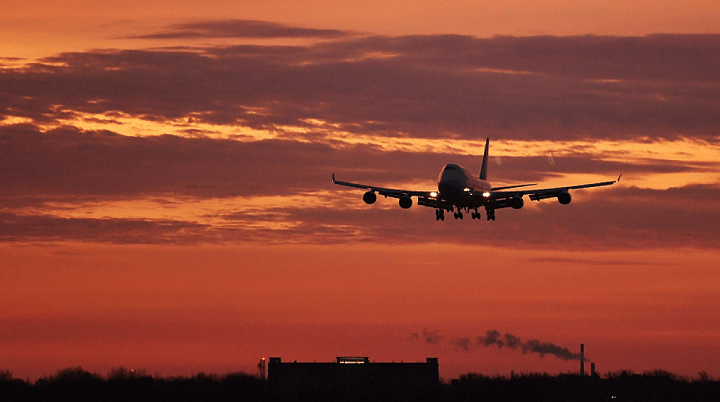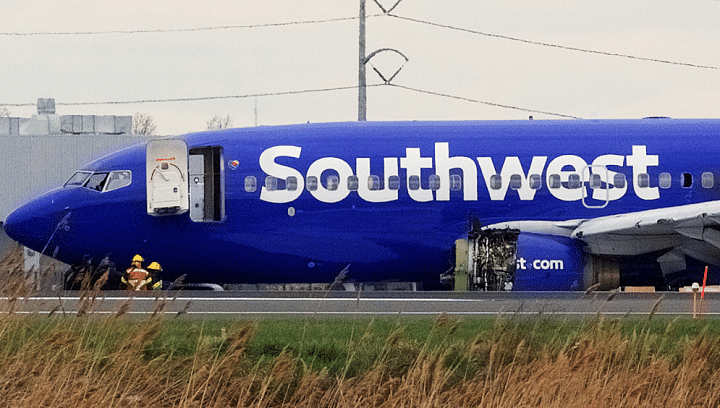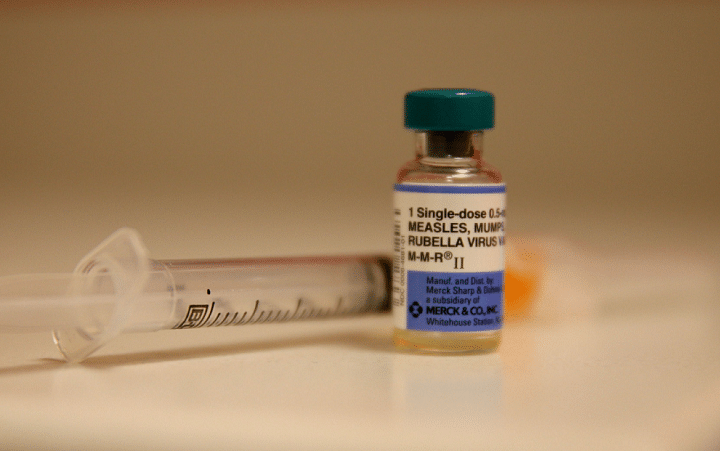A fresh fear of flying has come in the shape of sitting next to windows which horrifyingly break or fall apart in mid-flight.
As for other things that cause anxiety in the air, we're familiar with these old foes: Sitting near someone or something with bugs that give you the runs or a nasty bout of flu.
But now, we also might have that fresh horror of find ourselves sitting near that trending bug: The measles virus.
Is there anything we can do to fight the fears?
Is it within the realm of possibility, for example, to game the system to pick the safest seat in plane?
Good luck with that.
You may not be able to move to a seat that will give you the best chance to survive anything karma and turbulence may hurl at you.
However, you can fortify yourself with data from reports we'll look at, and instead move yourself to a mental space that feels safe.
FEAR OF FLYING

The recent headlines on engine failure, being sucked out of windows, and measles outbreaks make the fear of flying or aerophobia very real.
Dr Adrian Wang, a consultant psychiatrist at Gleneagles Medical Centre in Singapore, told The Straits Times earlier that being apprehensive about flying was common, affecting up to 30 per cent of people.
He added: "But a severe fear of flying to a degree that air travel has to be completely avoided is less common and affects only 2 to 3 per cent of the general population."
Fear figures
1 in 10
Proportion of Britons suffering from aerophobia, according to the charity, Anxiety UK.
25 per cent
Proportion of the American population suffering some nervousness about flying, according to estimates.
6.5 per cent
Proportion of Americans suffering from aerophobia, according to the National Institute of Mental Health.
FEAR OF FLYING OUT THE WINDOW

Recent mid-flight incidents were the stuff of nightmares for aerophobes and travel-hardened flyers alike.
One of the most horrifying incidents was when a woman died after she was nearly sucked out of a plane window of a Southwest Airlines flight on April 18.
An engine exploded. A window shattered. Cabin pressure was lost, and "from her waist above, she was outside of the plane". People wept and screamed with oxygen masks strapped to their faces.
The plane then landed safely.
In another incident, heavy turbulence on an Air India flight caused an inside window panel to fall off.
Passengers were terrified. One passenger, who was believed to have been sitting with his seatbelt unfastened, hit his head on an overhead cabin, while two others had minor injuries.
Thankfully, the outside part of the window next to seat 18-A was not broken and no depressurisation occurred.
Fight the fear: How strong are plane windows?
- They are stronger than you think, "rarely fail" and will not splinter when damaged, according to one report.
- It's hip to be not square. Windows with rounded corners can better withstand the pressure of cruising altitude. They were redesigned from being square because pressure built more around the corners of such windows. Three airplanes with square windows crashed in the 1950s after the fuselages tore apart during flight. But they're okay now. We think.
- A quora user used some back-of-the-envelope math to argue that it's not possible for a human to punch through an airplane window. A few years later, this assertion was tested when a man in a Boeing 787 at 35,000ft punched one of the windows and cracked it. Windows on airliners are made up of multiple layers of acrylic. So fortunately, only the inner panel was cracked on the Manchester-bound Dreamliner. Like the Air India incident, no depressurisation happened and the plane landed safely.
- Aircraft manufacturers have fired dead chickens at plane windshields to test how strong they are in the face of a bird strike. So luckily for us, poor birds are being sacrificed so we can sleep marginally better in our uncomfortable economy seats.
FEAR OF INFECTIONS

Disaster can strike in even the smoothest of flights in the calmest of weathers. No engines or windows are breaking but the beginnings of an infectious outbreak could be happening.
Measles outbreaks in Japan and Taiwan have been traced to a male flight attendant with Tigerair Taiwan, said Central News Agency.
He caught the highly contagious virus in Thailand in March, and the infection was confirmed on March 29. By then, he had infected two cabin crew colleagues during a Tigerair Taiwan flight to Okinawa in Japan.
The latter two continued working until they fell seriously ill and were diagnosed with measles in early April.
This has put thousands of people in quarantine and forced tourists to put off visits to southern Japan, media reports said.
The measles virus is one of the most contagious diseases known to man. In fact, media reports contrasted its highly contagious nature to that of the ebola virus to sort of comfort people that ebola won't spread that easily. Cold comfort for populations facing measles outbreaks.
18
The measles bug's "R0" sits at around 18. That means each person with measles spreads it to 18 people, on average, when nobody is vaccinated. (When everyone is vaccinated, the R0 drops to essentially zero for measles).
9 metres
Check out this graphic which shows how viruses can travel more than 9m in distance via airborne transmission. They can stay in the air for minutes, even hours, when the humidity and temperature are right. That means we don't even have to see the infected person to catch a virus from him or her. An infected person could sneeze, walk out of the room and leave an infectious mist behind. A few viruses, such as measles and chickenpox, spread this way.
Fight the fear: Lucky location
This simulation video revealed one of the many ways flu particles can travel in a pressurised airplane cabin. Modelling these high-flying infectious scenarios is the job of Ansys, a company that specialises in precise simulation software. Ansys uses computational fluid dynamics to simulate the pattern of airflow in airplanes to help airlines and health officials trace how flu particles are distributed at 39,000ft.
In the video, when a passenger sneezes, particles fly up, creating a cloud that lingers above the heads of other passengers. By the end, particles have spread all over the cabin, but it's the people seated to the left and to the right of the sneezer who are at the highest risk of infection.
A recent United States study pointed to this: People who fly on airplanes while contagious can indeed get other people sick, but the risk is mainly to those seated next to them or in the adjacent row.
The study in the Proceedings of the National Academy of Sciences is the first to quantify the odds of getting sick based on a passenger's proximity to an infectious person.
80 per cent
Probability of becoming infected for passengers seated within one row and within two seats laterally of the sick passenger, according to the study. For all other passengers, the probability of infection was less than three per cent.
4.6
Number of passengers each sick crew member could infect per flight, according to researchers.
The moral of the dirty, viral story? You may not necessarily fall sick if you're in the same cabin as an infected person.

FACING FEAR WITH AN APP
If you're apprehensive about flying, will an app called Am I Going Down? calm you down?
The app has been downloaded tens of thousands of times, said Mr Nic Johns, who set out to cure his wife's fear of flying by creating it. It predicts the odds of dying in a plane crash on any given flight, using the arrival time, the airline, the aircraft and other details.
Apparently, thousands of people find that comforting. How odd? Not when you see these kinds of figures:
1 in 20 million
The odds of dying in a plane crash under the best conditions.
1 in 5 million
The odds of dying in a plane crash under the worst conditions.
Happy flying.


